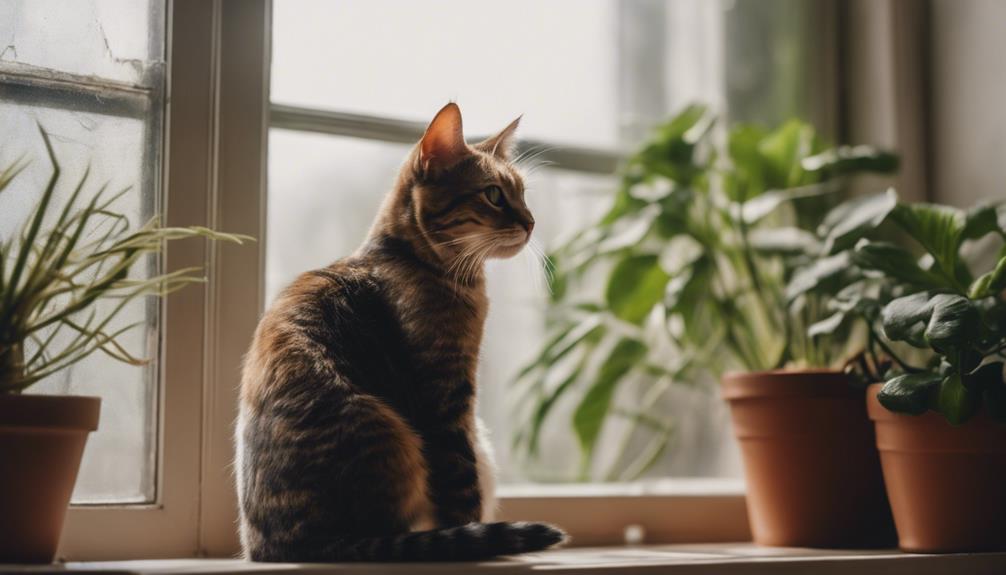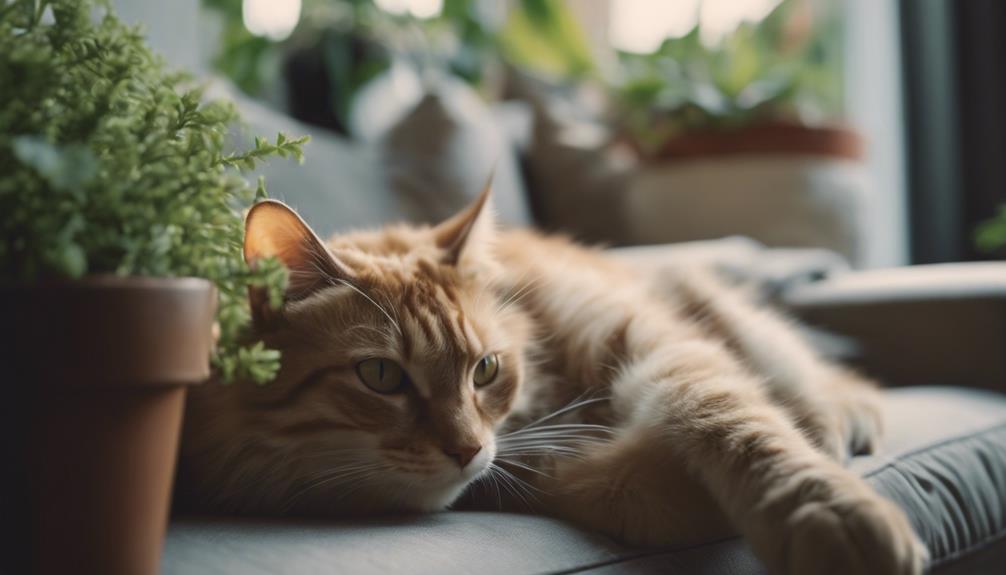Exploring the nuanced ways in which indoor cats can be exposed to fleas unveils a multifaceted challenge that necessitates a strategic approach for prevention.
From unsuspected sources within the household to potential interactions with outdoor animals, the risk of flea infestations is ever-present, even for cats that rarely venture outdoors.
Understanding these hidden pathways of transmission is crucial for implementing effective preventive measures that can safeguard feline companions against these resilient parasites.
By unraveling the intricacies of how indoor cats can acquire fleas, pet owners can equip themselves with the knowledge needed to protect their beloved pets from potential infestations.
Key Takeaways
- Fleas can enter homes through other pets, guests, or secondhand items.
- Regular use of preventative treatments is crucial for indoor cats.
- Vigilant cleaning and grooming practices help prevent fleas on indoor cats.
- Consult a vet for advice on effective flea prevention methods tailored to indoor cats.
Potential Sources of Fleas for Indoor Cats
Fleas can enter indoor environments through various sources, posing a persistent challenge for cat owners in flea prevention efforts. These blood-sucking pests are adept at finding their way inside, hitching rides on unsuspecting hosts and items. Dogs, rodents, and even guests can unknowingly bring fleas into the home, creating a breeding ground for infestations.
Additionally, outdoor excursions or interactions with other pets can expose indoor cats to these parasites. Pet brushes, secondhand items, and even the environment itself can harbor fleas, making it crucial for cat owners to remain vigilant. Regular grooming, cleaning, and preventive measures are essential to protect feline companions from the discomfort and health risks associated with fleas.
Effective Flea Treatment Options
When addressing the challenge of combating fleas on indoor cats, it is crucial for pet owners to be well-informed about effective treatment options available to ensure their feline companions' well-being.
One effective method is using flea shampoo for active infestations, which helps eliminate fleas on the cat's body. Spot-on flea treatments are another popular choice, providing long-lasting protection against fleas.
Regular vacuuming and daily carpet cleaning can also help remove fleas from the environment, reducing the risk of re-infestation. Deep cleaning bedding and fabrics where fleas can hide is essential.
For severe infestations, seeking professional extermination services may be necessary to fully eradicate the flea problem and keep indoor cats healthy and happy.
Importance of Regular Flea Prevention

To maintain the health and well-being of indoor cats, consistent and proactive flea prevention measures are essential for pet owners to implement. Regular flea prevention not only safeguards the cat's physical health but also contributes to their overall comfort and happiness.
Fleas can cause a range of issues for cats, including skin irritation, allergic reactions, and the potential transmission of diseases. By staying ahead of potential infestations through preventative measures, owners can ensure their feline companions lead a stress-free and healthy life indoors.
Additionally, preventing fleas can also protect the household environment from becoming a breeding ground for these pesky parasites. Therefore, investing time and effort into regular flea prevention is a crucial aspect of responsible cat ownership.
Key Preventative Measures for Indoor Cats
Implementing effective preventative measures is crucial for maintaining the well-being and health of indoor cats. To keep your feline friend safe from fleas, consider the following key strategies:
- Regular Grooming and Inspection: Spend quality time grooming your cat to check for any signs of fleas or flea dirt.
- Vacuuming and Cleaning Living Spaces: Regularly vacuum and clean your home to eliminate any flea eggs or larvae that may be present.
- Using Flea Prevention Products: Utilize vet-approved flea prevention products to safeguard your indoor cat from potential flea infestations.
Expert Recommendations for Flea Prevention

Effective flea prevention for indoor cats is essential to maintain their health and well-being. Experts recommend applying monthly full spectrum spot-on treatments to protect against fleas and ticks. It is crucial to safeguard indoor cats from diseases carried by insects like mosquitoes that can transmit heartworms.
While holistic or DIY flea preventatives may seem appealing, it is best to rely on vet-approved products for comprehensive coverage. Regular grooming, inspection, and cleaning routines are vital in preventing flea infestations. Ensuring that bedding and toys are washed frequently, and living spaces are vacuumed, can significantly reduce the risk of fleas.
For personalized recommendations tailored to your cat's specific needs, consulting a veterinarian is highly advised.
Frequently Asked Questions
Can Fleas Survive in Extreme Temperatures, Such as Freezing Cold or Scorching Heat, Inside a Home Environment?
Fleas can survive extreme temperatures inside homes, maintaining resilience in freezing cold or scorching heat. Their adaptability allows them to persist in cocoons for months, unaffected by insecticides or weather conditions, posing challenges for eradication efforts.
Are There Any Natural or Home Remedies That Can Effectively Get Rid of Fleas on Indoor Cats?
While natural and home remedies may seem appealing, professional flea treatments are often more effective for eliminating fleas on indoor cats. Consult a veterinarian for safe and reliable solutions tailored to your pet's specific needs.
Can Indoor Cats Get Fleas From Interacting With Outdoor Animals Through a Window or Screen?
Indoor cats can get fleas from outdoor animals through windows or screens. Fleas can hitch a ride on passing creatures, posing a risk even from a distance. Regular preventive measures, such as flea treatments and grooming, are crucial.
How Long Can Flea Eggs Survive in the Environment Before Hatching and Potentially Infesting Indoor Cats?
Flea eggs can survive in the environment for months before hatching, potentially infesting indoor cats. This persistence emphasizes the importance of regular cleaning and preventative measures to combat these resilient parasites and protect feline companions.
Is It Possible for Indoor Cats to Develop a Resistance to Certain Types of Flea Prevention Products Over Time?
It is plausible for indoor cats to develop resistance to specific flea prevention products over time due to repeated exposure. This phenomenon may result in decreased effectiveness, necessitating a change in treatment to maintain optimal flea control.
Can Incontinence in Cats Cause Flea Infestation?
Yes, incontinence in cats can lead to flea infestation. When a cat is unable to control their bladder or bowel movements, it can attract fleas due to the moisture and odor. To prevent this, it’s important to properly care for cat incontinence and keep the cat clean and dry.
Conclusion
In conclusion, understanding the various sources of flea infestations and implementing proactive flea prevention measures are essential for safeguarding indoor cats against these persistent parasites.
By utilizing effective flea treatment options, practicing regular grooming and cleaning routines, and following expert recommendations, pet owners can successfully prevent flea infestations and ensure the well-being of their feline companions.
Taking a holistic approach to flea prevention is crucial in maintaining a healthy environment for indoor cats.




